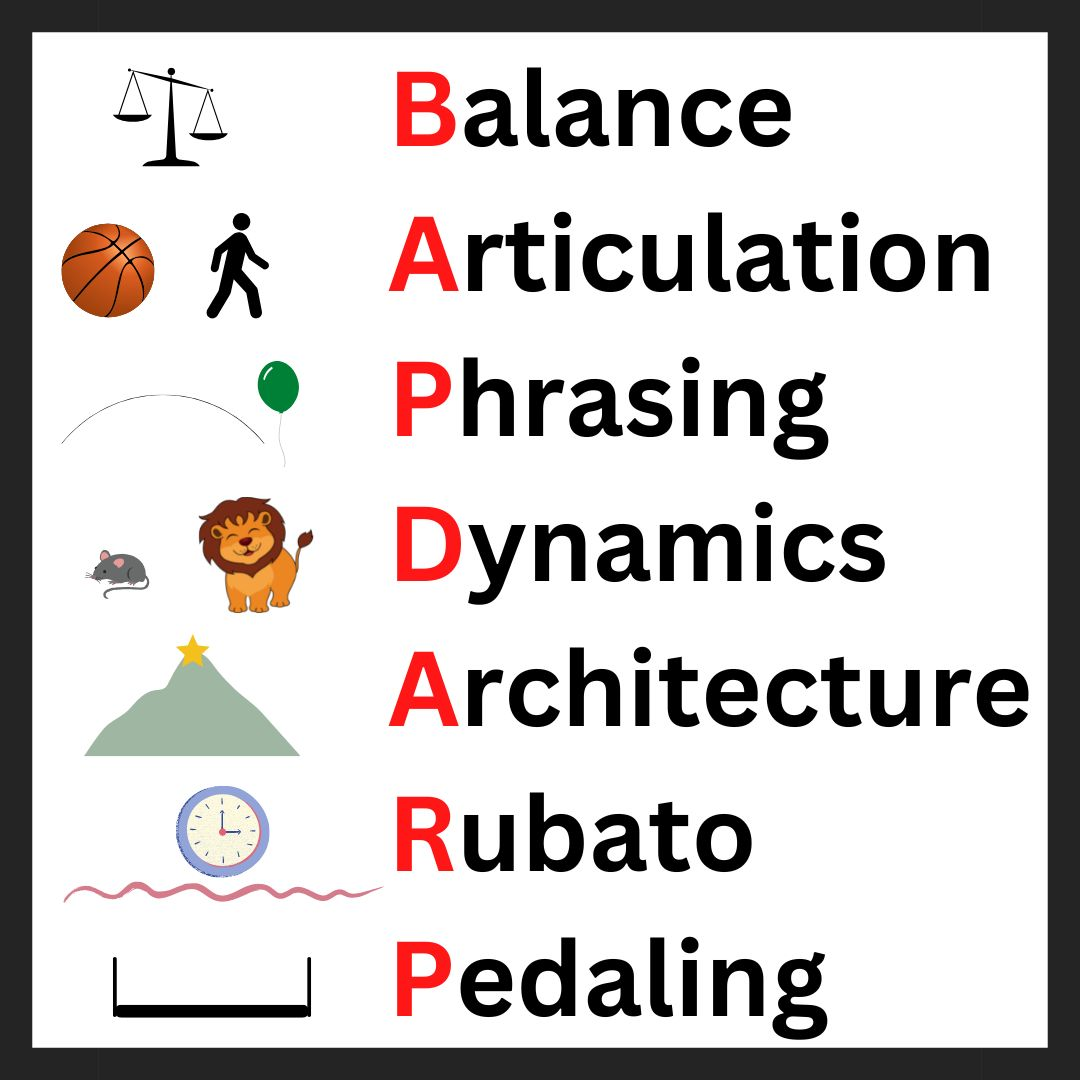Performing can be a shaky experience... literally. That can definitely complicate things when you are a pianist and shaky fingers lead to wrong notes and then your mind starts feeling like a Jenga game where one slip leads to more shakiness and possibly a total collapse.
I attended an informative UVMTA workshop this week presented by Dr Stephen Thomas including preparation tips for performance experiences to help you avoid freezing up with mental blocks. I loved many of the ideas he shared and mingled them with some of my own in my notetaking. A resource that kept coming to my mind was the book The Practice Revolution by Philip Johnston. It is loaded with different gamified strategies for structuring and improving practice quality and I find it especially helpful for children who may not naturally know how to organize their home practice sessions.
My personal key takeaways were
- Emphasize more slow practice with the metronome.
- Ask questions to lead students to use more positive self-talk as they identify what went well in their lesson playing or home practice.
- Train students to use more games from The Practice Revolution by Philip Johnston for mindful focused practice sessions.
Practice Quality not Quantity
- Start with consistent fingerings marked clearly in the score. Circle challenging finger changes.
- It's ok to deviate from printed fingerings. Be sure to maintain legato lines, reduce tension. Sometimes familiarity and simplicity is more functional than outdated rules about changing fingering on every single repeated note.
- Develop automaticity faster with CORRECT repetitions from the start, even if feels slow.
- Have a clear step-by-step approach to each practice session.
- Small sections with RH alone, LH alone, Hands Together, BAPDARP
- Troubleshoot the "dirty dishes" problem or tricky sections first. Don't waste time on practicing the "clean dishes" over and over!
- Define what "complete" is. Was the playing accurate? Expressive? Easy?
- Create mini goals with increasing layers of complexity as you practice repetitions. For example, first aim to play right hand alone slowly with accurate pitches, then precise rhythm, add left hand, or mentally focus on each step of BAPDARP as you repeat the passage.
Prepare the Score
- Divide into small sections (Typically 2-4 measures long).
- Practice overlapping sections for smooth transitions.
Use the Metronome Often
- The fastest method to results is SLOW PRACTICE!
- Choose specific metronome practice and performance goals and write them in the score.
- Practice slowly at the speed of no mistakes.
- After successful target goals, choose an acceleration rate (10 bmp) to notch up metronome speed. I also choose a deceleration rate to bump it down by 1 or 5 bpm after mistakes to help keep my practice sessions focused.
- Aim for slow perfection not fast mistakes!
Prepare Mentally with Meditation, Mindfulness and Positive Self-Talk
- Use meditation regularly to mentally prepare before practice or performances.
- We did a five minute meditation exercise at the workshop similar to HeadSpace with guided speech to relax breathing. I prefer meditation that also includes calm music and focuses on relaxing specific muscle groups. That can be great for reducing tension or being more mindful of it in the arms, shoulders and hands while playing.
- Choose to be mindfully attentive to the present without constantly judging as good or bad.
- Avoid negative self-talk and have students practice more positive self-talk.
- Expressively writing (or drawing?) about how you feel about the performance before the performing event can help you perform with better accuracy.
- Visualize and imagine the positive steps of your performance beforehand (calmly sitting on the bench, expressively executing dynamics, bowing with confidence, etc.).
Simplify Your Performance Day Routine
- Prepare with no sugar, plenty of rest and drink adequate water.
- Play through slowly several hours before.
- Weeks before performance record yourself and play for others often.








.png)





No comments:
Post a Comment